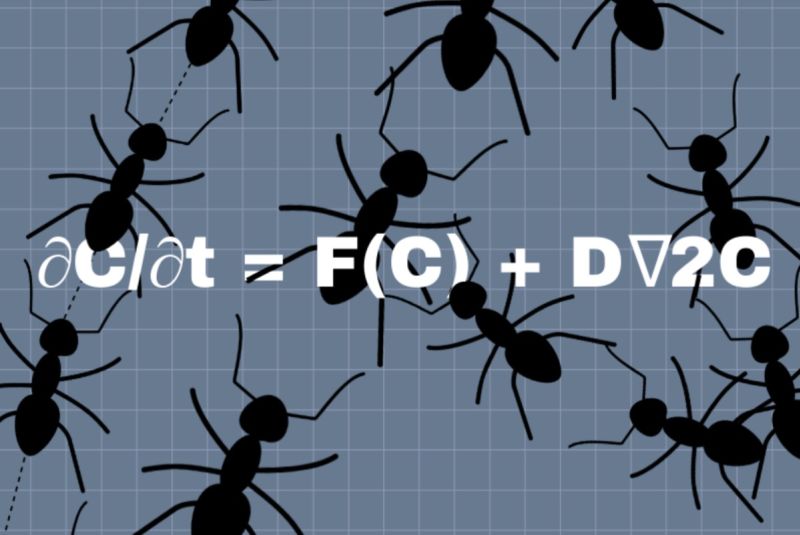
Enlarge / A recent study by University of Michigan researchers found evidence of Turing patterns in the movement of Azteca ant colonies on coffee farms in Mexico. (credit: University of Michigan)
Azteca ants build their nests in shade trees, and it's relatively common to find other nests in trees nearby. But these clusters of ant nests are often separated by large sections of shade trees where there are no nests at all. A December overview paper in BioScience by scientists at the University of Michigan argued that there is now substantial evidence that this unusual clustering is the result of self-organizing behavior of the ants—not external factors like temperature or moisture. In fact, the mechanism at work is strikingly similar to a process described by the late Alan Turing in a seminal 1952 paper.
Turing was attempting to understand how natural, nonrandom patterns emerge (like a zebra's stripes), and he focused on chemicals known as morphogens. He devised a mechanism involving the interaction between an activator chemical and an inhibitor chemical that diffuse throughout a system, much like like gas atoms will do in an enclosed box. The BioScience paper draws an analogy to injecting a drop of black ink into a beaker of water. Normally this would stabilize a system: the water would gradually turn a uniform gray. But if the inhibitor diffuses at a faster rate than the activator, the process is destabilized. That mechanism will produce a so-called "Turing pattern:" spots, stripes, or, when applied to an ecological system, clusters of ant nests.
The authors of the BioScience paper write:
No comments:
Post a Comment